


NAU Traffic Signal Alternatives

Alternatives
Geometric Alternatives
Detection
Detection is utilized at many intersections around the world due to its ability of adapting the
green times of the intersection instantaneously as a function of vehicle/pedestrian volume
on each approach. This detection comes in three main technologies, which include detector
loops, various types of cameras, and pedestrian push buttons. At the University corridor,
the only current detection devices in operation are pedestrian push-buttons at the Ped-walk.
Roundabout
A roundabout intersection is a viable geometric alteration at the intersection of University
and Knoles. These types of intersections use a circle with yielding at each approach in
order to circulate cars to their proper destinations without using any signalized equipment.
The negative of roundabouts is that they do not facilitate people with disabilities due to the
lack of any sound devices for the visually impaired.
Pedestrian Overpass Bridge
Pedestrian bridges have been constructed in order to route pedestrians over a road so that
their volume has no effect on the vehicle traffic of the corridor. This design could be used to
replace the Ped-walk on the University corridor of this project.
HAWK Pedestrian Signal
This type of signal is called a “High Intensity Activated crossWalK” (HAWK), which has four
phases when a pedestrian waiting to cross the road is detected. When a pedestrian pushes
a typical pedestrian push button, the Hawk signal displays a yellow phase and then red
phase for both directions of vehicular traffic for a given set amount of time. Once this time
has passed and the pedestrian is crossing the intersection, the signal displays two
alternating flashing red lights to both directions of vehicular traffic so that vehicles may
proceed through the intersection after yielding to the pedestrian.
Timing Alternatives
Delayed or Progression Timing
It is common practice to coordinate traffic signals along a corridor in order to facilitate more
cars per second of green time through the entire corridor. Since the slight majority of the
traffic volume runs eastbound-westbound, through both intersections, a delayed
coordination between these signals may prove to reduce queue length and delay time.
Delayed or progression timing forces the intersection to have the same cycle length or half
cycle lengths, therefore, the Ped-walk would require a longer green time for the
eastbound/westbound traffic which only has vehicle traffic flow.
Cycle Intersections Simultaneously
Before the second traffic cabinet was installed, the intersections mimicked each other in
their timing plans. Having the signals utilize a longer green time in one or both directions
may decrease the length of time the average pedestrian or car is stationary at the
intersection. Most traffic comes from the eastbound-westbound and creates a longer green
time in the opposite direction could increase average vehicle and pedestrian delay
substantially and will provide a longer green time for the vehicles travelling through the Ped-
walk.
Leave the Design As Is
The leave design as is alternative allows for existing geometry and timing plans of
intersections to be preserved. These timing plans were collected directly from
the Econolite ASC/3 controllers at the site. The timing plans that were in use are the
minimum allowable times for the pedestrian walk times for the University and Knoles
intersection. The Ped-walk allows for a longer pedestrian time to factor in the platoon effect
of the pedestrian at the intersection of the Ped-walk and University.
Detection
Detection is utilized at many intersections around the world due to its ability of adapting the
green times of the intersection instantaneously as a function of vehicle/pedestrian volume
on each approach. This detection comes in three main technologies, which include detector
loops, various types of cameras, and pedestrian push buttons. At the University corridor,
the only current detection devices in operation are pedestrian push-buttons at the Ped-walk.
Roundabout
A roundabout intersection is a viable geometric alteration at the intersection of University
and Knoles. These types of intersections use a circle with yielding at each approach in
order to circulate cars to their proper destinations without using any signalized equipment.
The negative of roundabouts is that they do not facilitate people with disabilities due to the
lack of any sound devices for the visually impaired.
Pedestrian Overpass Bridge
Pedestrian bridges have been constructed in order to route pedestrians over a road so that
their volume has no effect on the vehicle traffic of the corridor. This design could be used to
replace the Ped-walk on the University corridor of this project.
HAWK Pedestrian Signal
This type of signal is called a “High Intensity Activated crossWalK” (HAWK), which has four
phases when a pedestrian waiting to cross the road is detected. When a pedestrian pushes
a typical pedestrian push button, the Hawk signal displays a yellow phase and then red
phase for both directions of vehicular traffic for a given set amount of time. Once this time
has passed and the pedestrian is crossing the intersection, the signal displays two
alternating flashing red lights to both directions of vehicular traffic so that vehicles may
proceed through the intersection after yielding to the pedestrian.
Timing Alternatives
Delayed or Progression Timing
It is common practice to coordinate traffic signals along a corridor in order to facilitate more
cars per second of green time through the entire corridor. Since the slight majority of the
traffic volume runs eastbound-westbound, through both intersections, a delayed
coordination between these signals may prove to reduce queue length and delay time.
Delayed or progression timing forces the intersection to have the same cycle length or half
cycle lengths, therefore, the Ped-walk would require a longer green time for the
eastbound/westbound traffic which only has vehicle traffic flow.
Cycle Intersections Simultaneously
Before the second traffic cabinet was installed, the intersections mimicked each other in
their timing plans. Having the signals utilize a longer green time in one or both directions
may decrease the length of time the average pedestrian or car is stationary at the
intersection. Most traffic comes from the eastbound-westbound and creates a longer green
time in the opposite direction could increase average vehicle and pedestrian delay
substantially and will provide a longer green time for the vehicles travelling through the Ped-
walk.
Leave the Design As Is
The leave design as is alternative allows for existing geometry and timing plans of
intersections to be preserved. These timing plans were collected directly from
the Econolite ASC/3 controllers at the site. The timing plans that were in use are the
minimum allowable times for the pedestrian walk times for the University and Knoles
intersection. The Ped-walk allows for a longer pedestrian time to factor in the platoon effect
of the pedestrian at the intersection of the Ped-walk and University.

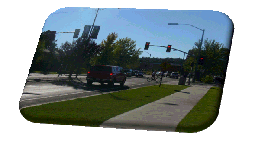

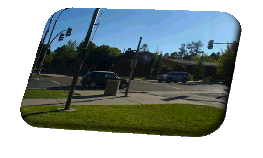

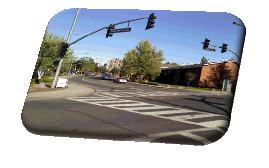

Design Matrices
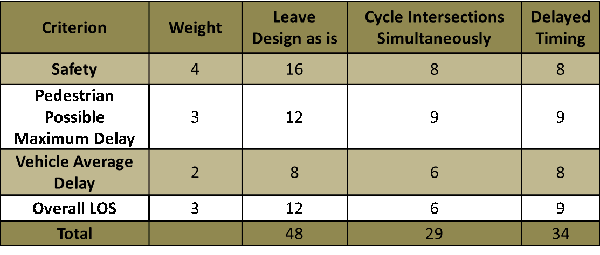
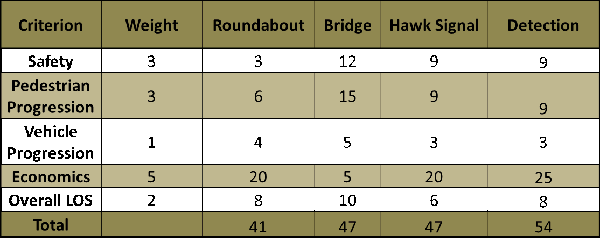
Table 1-Design Matrix for Timing Alternatives
Table 2- Design Matrix for Geometric Alternatives
The above design matrices describe the decision processes that IDD Engineering followed to
provide the best design for the University corridor. Table 1 describes the timing alternatives and
their corresponding ranking on the four main requirements. Table 2 shows the same information
for the five geometric design alternatives.
Each criterion was ranked on a scale of 1 to 5, 5 being advantageous and 1 being unsatisfactory.
These rankings were then multiplied by their corresponding weight and displayed in these tables.
The second column on these tables shows the weight that each criterion was given. The individual
weights for each criterion describe the level of importance to the overall project.
These design matrices concluded that leaving the time plan as it stands now while adding detection
would be the most beneficial design for the University corridor.
provide the best design for the University corridor. Table 1 describes the timing alternatives and
their corresponding ranking on the four main requirements. Table 2 shows the same information
for the five geometric design alternatives.
Each criterion was ranked on a scale of 1 to 5, 5 being advantageous and 1 being unsatisfactory.
These rankings were then multiplied by their corresponding weight and displayed in these tables.
The second column on these tables shows the weight that each criterion was given. The individual
weights for each criterion describe the level of importance to the overall project.
These design matrices concluded that leaving the time plan as it stands now while adding detection
would be the most beneficial design for the University corridor.
Copyright Northern Arizona University, IDD Engineering
Last Modified: 4/28/11